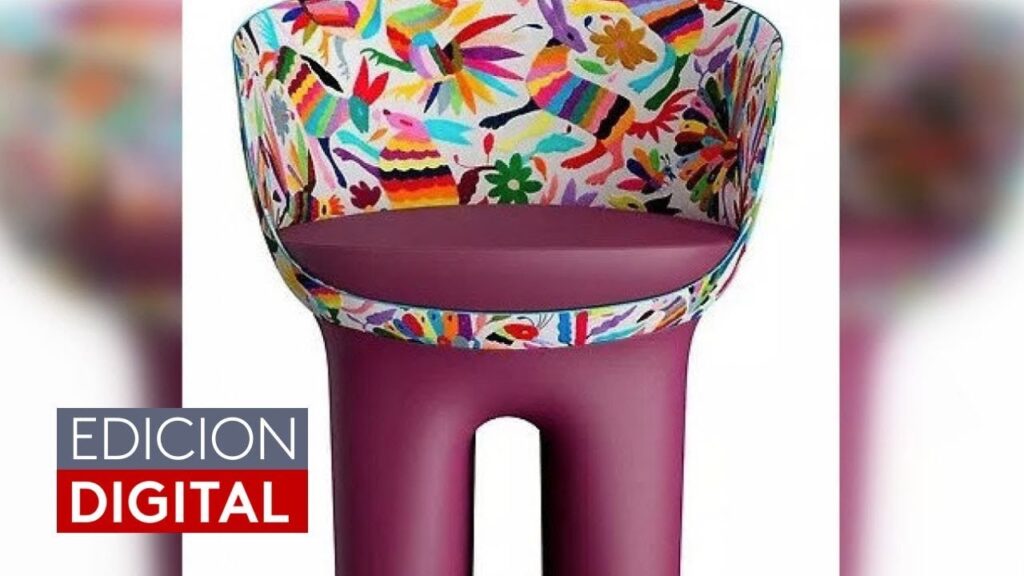The Controversy of Cultural Appropriation: Louis Vuitton vs Tenango de Doria Embroidery
Cultural appropriation has become a topic of heated debate in the world of fashion, and the dispute between luxury brand Louis Vuitton and the artisans of Tenango de Doria is a prime example. Louis Vuitton, known for its high-end products, was accused of using traditional Mexican embroidery designs from the community of Tenango de Doria in their 2019 fashion collection without proper recognition or compensation for the indigenous creators. This sparked a conversation not only about intellectual property rights but also about the respect and preservation of cultural heritage.
The Value of Tenango de Doria’s Artistic Legacy
The embroidery of Tenango de Doria is not just a craft; it’s a cultural expression steeped in history and significance. Every stitch tells a story, and every color represents a part of the diverse tapestry that is Mexican culture. These designs are more than just patterns; they are a narrative of the community’s way of life, myths, and traditions. When a global player such as Louis Vuitton incorporates these designs into their products without acknowledging the source, it risks diminishing the value of the original work and alienates the very artisans whose livelihood depends on their craft.
Global Fashion vs. Local Acknowledgement
In an era where global fashion seeks inspiration from all corners of the world, the line between cultural appreciation and cultural appropriation can sometimes blur. While assimilation of different cultural elements can lead to beautiful, eclectic collections, there is a pressing need for brands like Louis Vuitton to navigate this space with sensitivity and respect. Ensuring that collaborations give due credit and fair compensation to local artisans is crucial. The recognition of artisanal contributions not only honors the creators but also provides an opportunity for authentic cultural exchange and sustainable economic partnerships.
Understanding the Significance of Tenango de Doria’s Artisanal Embroideries
The Cultural Heritage of Tenango Embroideries
The vibrant, hand-embroidered designs from Tenango de Doria are not merely decorative items; they are powerful symbols of the Hidalgo region’s history and cultural identity. Originating from the Otomí Indigenous community in the heart of Mexico, each stitch tells a story of ancient traditions and beliefs. The embroideries often depict natural scenery, local flora and fauna, and elements of everyday life, interwoven with mythical beliefs and the artisans’ own imagination.
A Labor of Love and Patience
Crafting a piece of Tenango embroidery is a time-consuming process that requires patience, precision, and a deep understanding of the cultural motifs being sewn. Artisans, primarily women, pass down these skills from generation to generation, spending countless hours perfecting their craft. The communal aspect of this art form serves not only as a means of economic sustenance but also as a social fabric that binds the community together. This is a testament to the dedication and passion behind every colorful piece of Tenango embroidery.
The Symbolism in Colors and Patterns
The choice of colors and patterns in Tenango embroideries is anything but arbitrary. Each hue and design is chosen for its significance and purpose, with different colors often representing various aspects of nature and life. For instance, red might symbolize the earth’s fertility, while blue could be associated with the vastness of the sky. Patterns are also emblematic, often representing the artisan’s personal stories or folklore passed down through generations. Due to this intricate symbology, collectors and lovers of Tenango embroideries appreciate them as much for their aesthetics as for the rich cultural narratives they encapsulate.
Examining the Impact of High Fashion’s Borrowing on Indigenous Communities
The interplay between high fashion and indigenous cultures has illuminated a complex relationship. As designers seek inspiration from the rich tapestries of indigenous artistry, they often incorporate traditional patterns, colors, and techniques into their collections. This practice posits a double-edged sword; on one hand, it introduces the wider world to the aesthetic depth of these communities. On the other hand, it frequently overlooks the need for respectful collaboration and fair compensation, leading to cultural misappropriation. The heart of indigenous communities—woven into the very fabrics taken by high fashion—can be overshadowed by the glamorous veneer of the runway, severing the narrative from its roots.
In many indigenous societies, specific textiles and designs are more than mere decoration; they embody histories, stories, and rights passed down through generations. When high fashion houses replicate these designs without acknowledging their provenance or significance, they risk eroding the cultural heritage they aim to celebrate. Intellectual property rights are often not made to cover these situations adequately, which leaves indigenous artisans without the legal recourse to protect their ancestral crafts. The effect extends beyond the loss of artistic control, as economic implications arise when luxury brands reap the profits of centuries-old indigenous creativity without reciprocal economic benefit to the communities.
The conversation around appropriation in fashion is driving a push towards ethical sourcing and collaborative creation. Initiatives aimed at not just borrowing aesthetics but also engaging in genuine partnerships with indigenous artisans are emerging. These collaborations are not without their challenges, as power dynamics and commercial interests must be meticulously navigated. However, they mark a critical step forward in the right direction, ensuring that the vibrant legacy of indigenous design can be celebrated and preserved alongside its influence on contemporary high fashion. Such partnerships work toward setting a precedent for appreciation over appropriation, where recognition and respect are paramount.
Protecting Cultural Heritage: The Case of Tenango de Doria against Louis Vuitton
In recent times, the importance of cultural heritage and its protection has been thrust into the limelight due to numerous cases of cultural misappropriation. One notable instance is the conflict between the artisans of Tenango de Doria, a small town in Mexico renowned for its vibrant and intricately designed textiles, and the luxury fashion house Louis Vuitton. The dispute arose when the fashion giant was accused of using traditional Tenango patterns in their product line without proper acknowledgment or recompense to the community that has preserved these designs for generations.
The indigenous community of Tenango de Doria has been creating these unique designs, each telling a story or reflecting the natural environment, long before the high fashion world took notice. When Louis Vuitton’s use of similar patterns came to light, it sparked an international conversation about the protection of intellectual and cultural property. The artisans argued that their heritage was not simply a pattern to be used for profit, but a treasured part of their history and identity.
In response to the outcry, some advocates called for legal protection and stronger intellectual property rights for indigenous creations. This situation illuminated the broader issue of how global entities utilise local cultural symbols and crafts, often without supporting the communities who originated them. It highlighted the need for ethical collaborations that not only celebrate but also compensate the source communities, ensuring they benefit from the use of their cultural heritage.
The case also emphasized the complexity of cultural exchange in a globalized world. It’s apparent that while cultural sharing is inevitable and can be positive, it requires a certain sensitivity and respect to the origins of these cultural artifacts. The Tenango de Doria case serves as a catalyst for change, prompting calls to re-evaluate how cultural heritage is valued and protected in an era where cultural boundaries are increasingly blurred.



